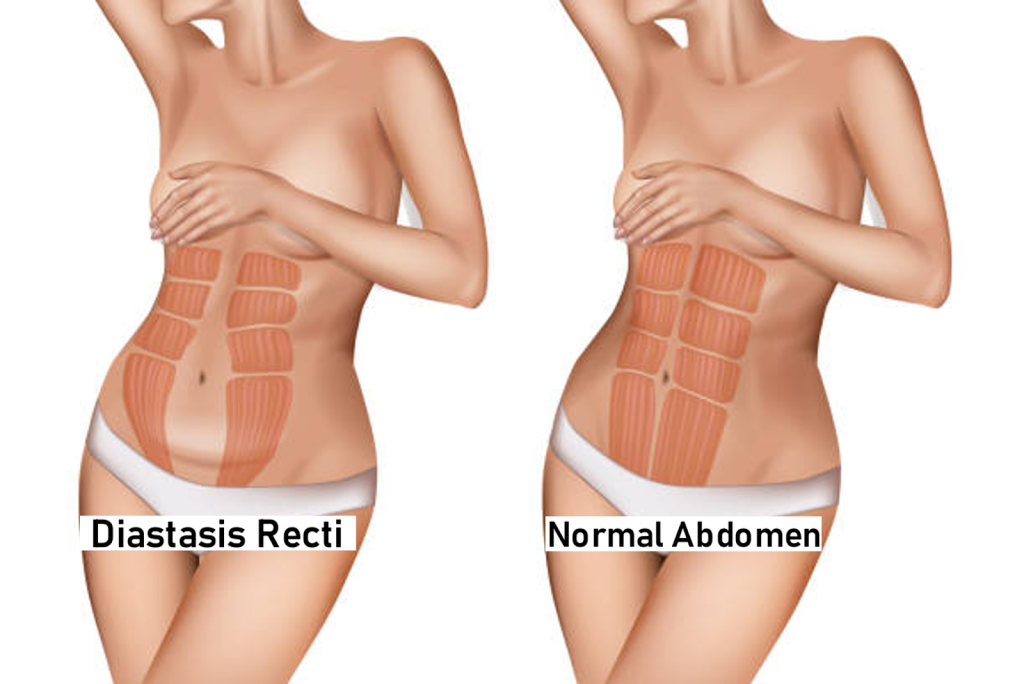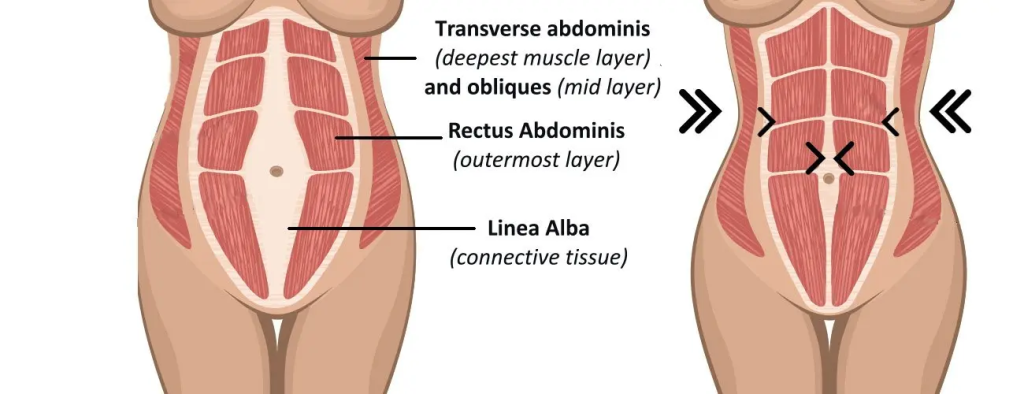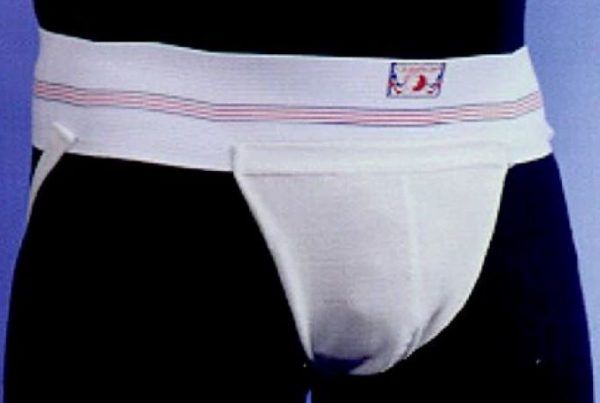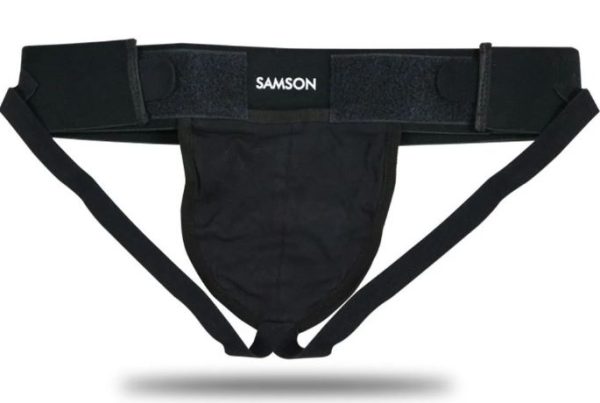
Diastasis recti is a condition that can affect women, men, and even newborns but is most common in pregnant and postpartum individuals. Simply put, it is the separation of the rectus abdominis muscles during pregnancy. This separation can cause a bulge in the belly, which may take up to a year to heal. While the abdominal gap usually closes independently, exercise and physical therapy can help close the separation. In this article, we go over how this condition occurs and what you can do to treat it.
What is Diastasis Recti?

Diastasis recti, also known as diastasis rectus abdominis, as mentioned earlier is the separation of the rectus abdominis muscles during and after pregnancy. The rectus abdominis runs vertically along the front of the stomach; divided into left and right sides by a band called the linea alba. As the uterus expands, the abdominals stretch, and the linea alba thins and pulls apart. This widens as the uterus expands. In pregnant women, after delivery of the baby, the linea alba can heal and reassemble, but when it loses its elasticity, the gap in the abdominals doesn’t close as it should. This results in a pregnant appearance months or years after giving birth.
What causes Diastasis Recti?

Diastasis recti is a symptom of chronic core weakness, causing back pains, disc herniations, knee pain, ankle pain, or neck pain. It occurs when the core is not effectively transferring excessive pressure and regulating intra-abdominal pressure. Excessive pressure is consistently forced into the tendinous linea alba sheath, potentially causing severe stretching.
Who are at Risk?

The risk of developing Diastasis Recti increases for adults who are of a heavier weight, lift heavy weights incorrectly, perform excessive abdominal muscle exercises, and are pregnant. Infants diagnosed with diastasis recti have underdeveloped rectus abdominis, while pregnant women develop the condition due to their uterus growing. Oftentimes misdiagnosed as a beer belly or weight gain, diastasis recti develops gradually over time in men. Researchers have identified four causes in male patients: improper exercise, excessive stress on abdominal muscles, family history, age, and certain medical conditions such as connective tissue disorders.
Symptoms

While the most common symptom of Diastasis Recti is a bulge on the lower abdomen located above or right below your belly button. For women, symptoms may only be noticeable postpartum. Other symptoms may vary from person to person, and gender, depending on the situation.
Diastasis Recti symptoms include lower back pain, poor posture, constipation, core weakness, bloating, belly bulge, difficulty lifting, walking, and performing daily tasks. It is also common to experience pelvic or hip pain urine leakage (Incontinence), constipation, and pain during intercourse (Dyspareunia).
Treatment

Although rarely performed, surgery may fix Diastasis recti. Instead, healthcare providers recommend physical therapy or at-home exercises to help heal diastasis recti before surgical methods. A study published in 2021 in the National Library of Medicine found that with the proper use of Kinesiology Tape, Diastasis Recti can be reduced up to 12 months postpartum. Exercise programs can help reduce diastasis recti within three to nine weeks. These exercises include arm and leg extension, bridges (with a stability ball), cat-cow pose, hip circles, pelvic tilts with crunch, and planks. If exercise or conservative treatment fails, surgery is a last resort. Surgery can be considered six to 12 months postpartum if diastasis recti hasn’t resolved on its own. Patients may also have open, laparoscopic, or robot-assisted surgery.
Kinesiology Tape is available in various colors in our store to fit your postpartum needs!
Disclaimer
GulfPhysio.com and all of its content are for informational purposes only. All information is believed to be accurate at the time of posting and should NOT be construed as professional medical advice. Please seek a medical professional in the event of pain or injury.



